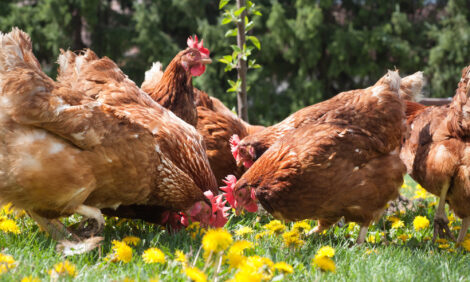



New US survey examines consumers’ understanding of the environmental impact of chicken production
National Chicken Council (NCC) seeks to bridge the gap between consumer perception and reality.Further delivering on its commitment to transparency, the National Chicken Council (NCC) unveiled the findings of its new nationwide survey about how deeply consumers understand sustainable food practices as it relates to broiler chicken production, an industry that maintains one of the lowest environmental footprints in animal agriculture. NCC announced the new survey at the Sustainable Brands ’19 Conference in Detroit.
According to survey results, knowledge of the environmental impact of chicken among consumers is low. Only half of survey participants (51 percent) are moderately knowledgeable about chicken’s impact on the environment, while three-quarters (71 percent) are moderately knowledgeable about how chicken is produced. While most are familiar with topics related to animal welfare and processing, knowledge related to sustainability topics in the industry like water usage (20 percent), greenhouse gas emissions (21 percent) and water impact (19 percent) is limited.
In addition, when it comes to factors driving purchase decisions today, the environmental impact of chicken (34 percent) is as important as animal welfare (37 percent). Of note, taste (82 percent) and price (65 percent) continue to be the top two drivers of purchase decisions.
Bridging the gap between perception and reality of environmental impacts in chicken production
Misconceptions abound surrounding the effects of chicken production on key environmental issues like pollution, water quality and transportation. Consumers surveyed believe these issues have a high environmental cost, but their knowledge and understanding of these issues is low.
- Water issues are seen as having high environmental impact, but consumers are less knowledgeable about them.
- Water impact/water contamination (74 percent) and water usage (69 percent) are seen as high environmental costs, but current knowledge on both is low at 34 percent and 36 percent, respectively.
- Greenhouse gas emissions and shipping are seen as having moderate environmental impact, but most consumers also have significantly less knowledge than average about these practices for chicken production.
Seeing first-hand sustainability in chicken production
In conjunction with the sustainability survey, NCC also created a video, offering consumers, foodservice experts and others a look into chicken farmers and their various sustainability practices. The newly released video is available online here.
“As sustainability in agriculture continues to be a hot topic among US shoppers, benchmarking perceptions and attitudes related to broiler chicken production and its impact on the environment is key to helping the industry better communicate with consumers,” said Tom Super, spokesperson for the National Chicken Council. “Based on what we hear, we can deliver accurate information to consumers and influencers in ways that will help them better understand industry-wide welfare and environmental standards that are core to the American-raised chicken they buy and eat.”
NCC has resources at the ready to help break through to audiences, including Chicken Check In, frequently asked questions, virtual reality (VR) video series and more. Please also access an overview of NCC’s survey findings here.










